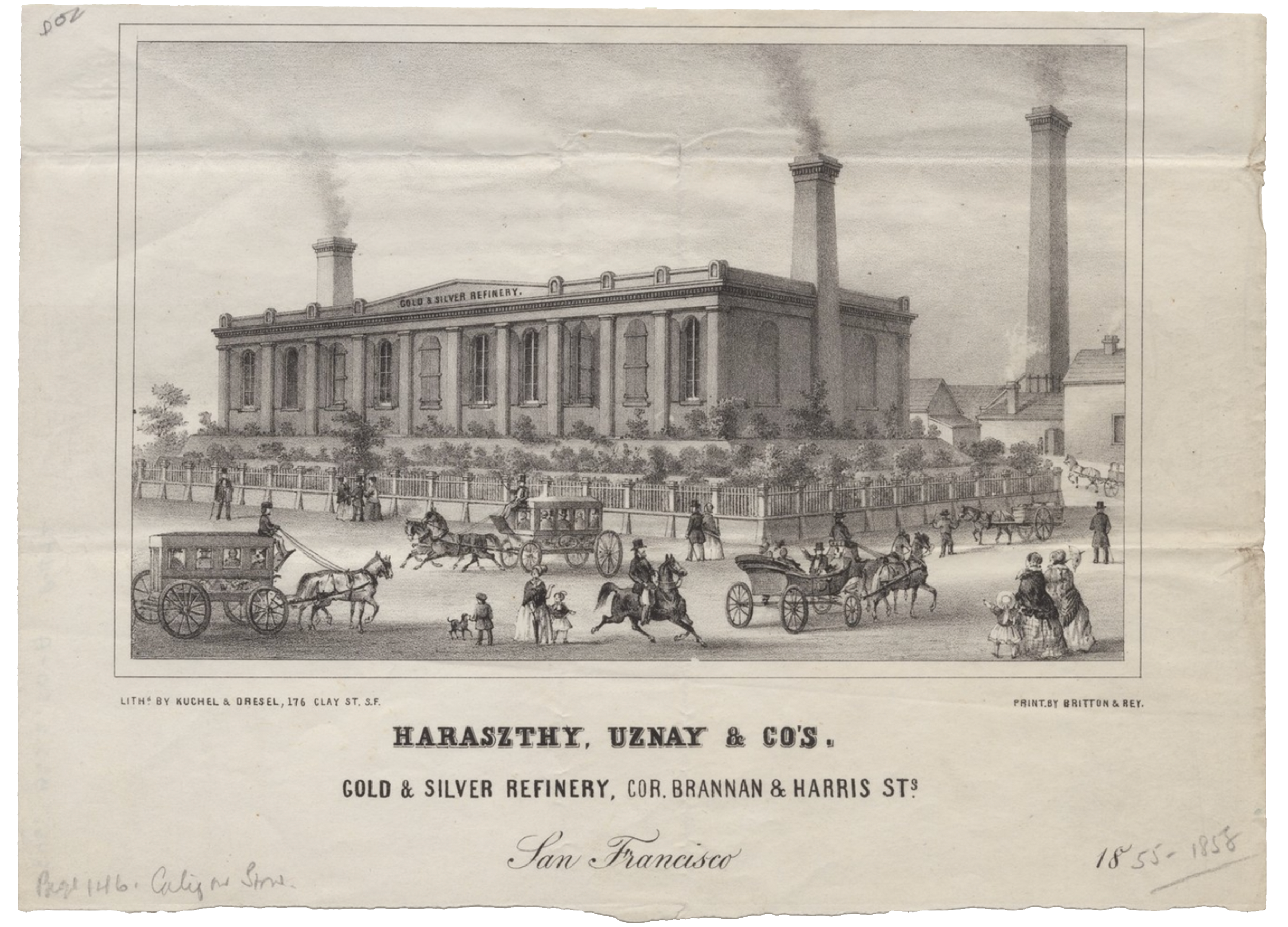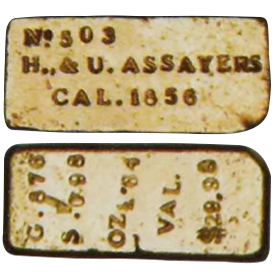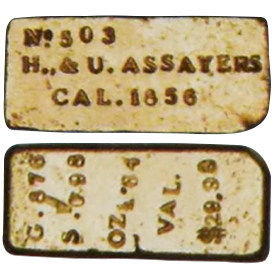Col. Agoston Haraszthy became prominent in California in two areas: the cultivation of grapes for wine and the assaying and refining of metals. Born in Futtak in southern Hungary in 1812, Haraszthy served in the Royal Guard under Austrian Emperor Ferdinand. In 1840 he came to America, settling in what later became Wisconsin, where he co-founded Town Haraszthy, later known as Sauk City. After staying in America for two years he returned home to bring back his family. In 1849 Haraszthy, his family, and several friends went to California via the Santa Fe Trail. He entered politics, was elected sheriff, and in 1852 was elected state assemblyman. Early in that year he acquired land in Northern California and, later, developed additional acreage at Crystal Springs. His efforts in promoting two grapes, the Muscat of Alexandria and the Zinfandel, led to his reputation as "the father of California wine." His interest in viticulture increased, and by 1863 he supervised 6,000 acres. The State of California commissioned him to go to Europe to study the growing of grapes and production of wine, an effort for which he was never reimbursed. After the war his fortunes turned for the worse and he had several financial reverses. He owned property in Central America, and it was said that his death on July 6, 1869 occurred when he fell into a stream infested with crocodiles.
But it is not for wine culture that he is remembered by numismatists and scholars of the Gold Rush. The story of Haraszthy's involvement with precious metals was told in Brian McKinty's Haraszthy at the Mint and by Theodore Schoenman in his book, The Father of California Wine.
The discovery of gold had attracted several highly trained Hungarian metallurgists to San Francisco with whom Haraszthy formed a partnership in the Eureka Gold and Silver Refining Company, an up-to-date operation equipped with specially designed machinery. When the San Francisco Mint was opened in April 1854, it was unable to handle the huge volume of gold rolling in from the goldfields. The United States Treasury decided to contract private refiners to handle the steady accumulating backlog. No one was better equipped for this than Haraszthy and his Eureka Refinery, and they were given a contract. Although he was appointed assayer of the Mint, the obvious conflict of interest was overlooked because of Haraszthy's reputation for integrity and the government's urgent need...
Earlier Haraszthy helped Adams & Company refine gold in the same city. John J. Ford, Jr. believes that he may have been connected with early operations of Wass, Molitor & Company as well.
Following rumors that $130,000 worth of gold was wasted at the mint, Haraszthy resigned in June 1857 and requested an investigation. Subsequently J. Ross Browne, a Treasury agent, charged Haraszthy with fraud. Following an indictment against him, bail was denied unless he put all of his property in escrow against a possible judgment. Outraged and concerned, Haraszthy had no choice but to comply. He sold several commercial interests and took out mortgages on others. A great public interest arose in the affair, and scarcely a day went by without news of it being published. Four years later a jury found that there was "no evidence in this case to prove the slightest fraud by the defendant."

Courtesy of UC Berkeley, Bancroft Library
The State Register and Year Book of Facts for the Year 1857, compiled in 1856, contains a full page advertisement for Haraszthy, Uznay & Company. The text noted that the firm would "return Deposits in bars within twenty-four hours and receive Deposits by the Express Offices...Bars of their manufacture can be disposed of without any difficulty or inconvenience to shippers."
The firm consisted of a partnership with Captain Charles Uznay, another Hungarian. The latter was associated at one time with principals of Wass, Molitor & Company.
It is believed that Haraszthy, Uznay & Company flourished circa 1856 and discontinued business some time in 1857. A lithograph by Britton & Rey shows the firm's headquarters as a pretentious building with columns on the front, occupying what seems to be a large portion of the block at the corner of Brannan & Harris Streets.







